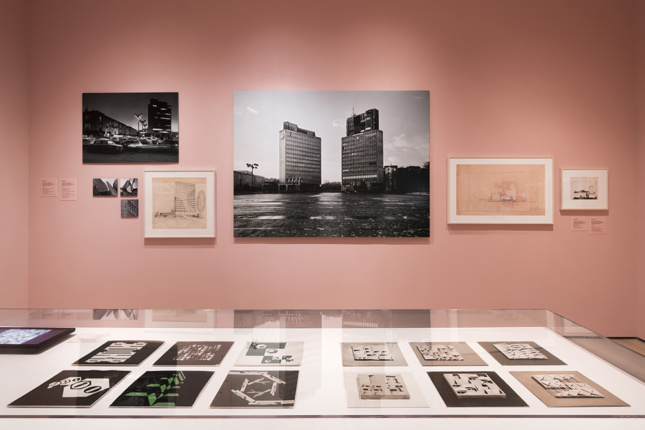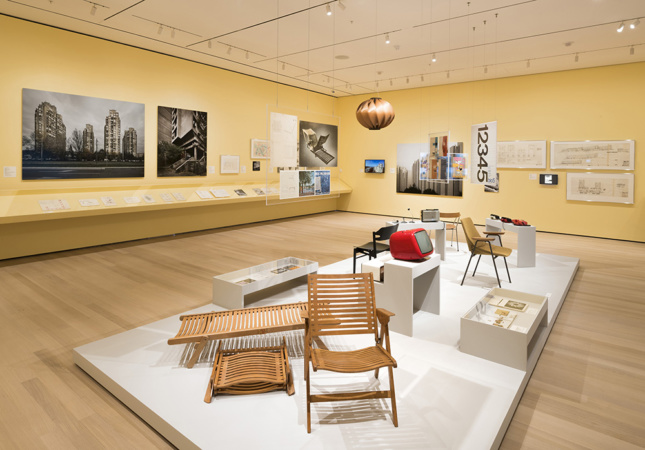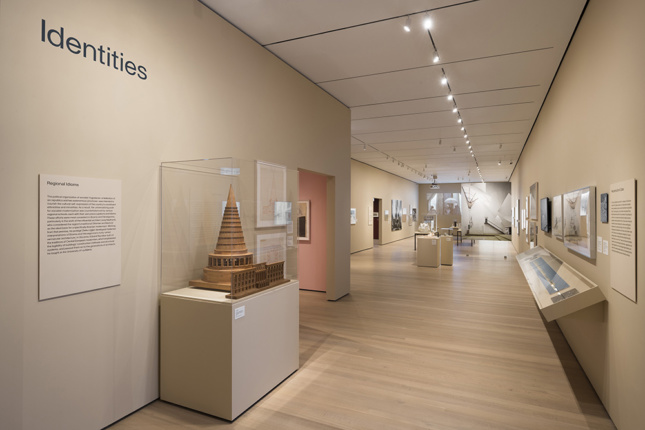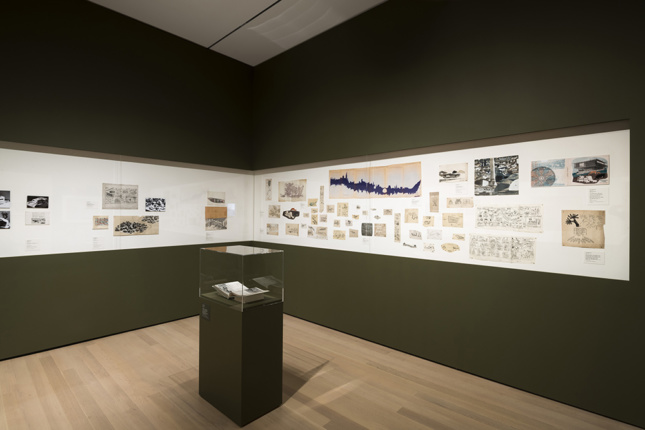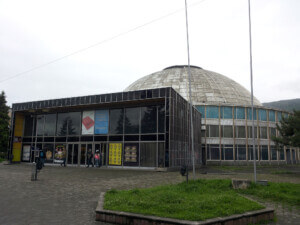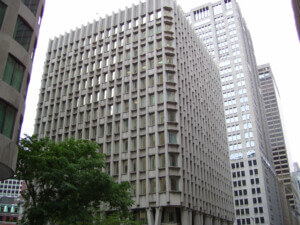The Museum of Modern Art (MoMA) in New York City is hosting an extraordinary exhibition surveying late modern architecture from a country that no longer exists: Yugoslavia. Toward a Concrete Utopia: Architecture in Yugoslavia, 1948–1980 is on view now through January 13, 2019. Approximately six hundred items are on display in salon style across MoMA’s galleries including original drawings, newly crafted scale models, and a series of commissioned photographs by a Swiss photographer Valentin Jeck. The material is not presented chronologically but rather arranged spatially as a series of sequential topics ranging from Global Networks to Everyday Life and Identities, each branching into sub-topics. Distinct rooms are reserved for individual architects that the curators have highlighted as key thinkers in the spatialization of the Yugoslav socialist identity, including Bogdan Bogdanović, Juraj Neidhardt, Vjenceslav Richter, and Edvard Ravnikar. An entire gallery is devoted to the brutalist reconstruction of Skopje featuring the work of Kenzo Tange with Janko Konstantinov, a graduate of Yale. While female architects like Milica Šterić, Melanija Marušić, and Svetlana Kana Radević did not get a separate booth, they were largely present in galleries and through an essay on gender in Yugoslav architecture published in the exhibition catalog, written by curatorial assistant Anna Kats and Theodossis Issaias.
The show’s curators, MoMA’s Martino Stierli and guest curator Vladimir Kulić, begin the show by asserting that this exhibition is a survey of architecture that has been all but absent from modern history. They also make clear that Yugoslavia was expelled from the Soviet bloc in 1948, removing it from Stalin’s grip on spatial esthetics. The country had a need to search for its collective identity elsewhere. As Vladimir Kulić states, the architecture from Yugoslav socialism is an adaptation rather than copy, giving the work a quality of enhanced interpretation. The work exhibited draws a range of inspiration from U.S. postwar corporate architecture, brutalism on the global stage, most notably from Paul Rudolph and Kenzo Tange, Scandinavia’s organic volumetrics, Alvar Aalto’s sensibility towards nature, and playful forms in concrete relating to Oscar Niemeyer’s Brazilian freeing of form to allow expression of permeability and elegance.
MoMA’s exhibit suggests that socialist architecture in Yugoslavia was a success of its own time. Its unique adaptation of late modernism was complementary with other grand narratives of modern architecture worldwide. To someone like me who lived in the architecture of Yugoslavia on display at MoMA, the success of the exhibit is two-fold. First, thanks to daring curatorial decisions to organize the material in topics rather than chronologically or as a fixed narrative, the exhibit avoids the nostalgia that surrounds avant-garde Soviet architecture. And second, these Yugoslav examples are cast as success stories from the recent socialist past, with a post-avant-garde afterlife increasingly relevant to contemporary times. As Stierli points out, a majority of the architecture presented in the exhibition is still in use today.

Included in the exhibit are two outstanding works, namely the excerpts from Mila Turajlić’s video arrangement Living Space/Loving Space (2018), and Jasmina Čibić’s mesmerizing video entitled Nada: Act 1 (2016), which turned Richter’s model for the Yugoslav Pavilion at Expo 1958 in Brussels into a string musical instrument. At the entrance to the galleries, visitors will find a legendary pan-Yugoslav kiosk K67 by Saša Mächtig of Slovenia doing precisely what the kiosk was meant for: providing information.
Barry Bergdoll noted in a follow-up event at the AIA Center for Architecture that this exhibition celebrates an architecture that came out of a now superseded political system, and the show suggests that Yugoslavia’s socialism was perhaps not that nefarious after all.
Toward a Concrete Utopia is an extraordinary exhibition that is opening doors for research on the subject. Expanding scholarship was reportedly an ambition of Stierli from the beginning of planning for the exhibit. This widening will help bring to view Yugoslav architecture beyond MoMA’s selection. According to the warm reception, architecture from socialist Yugoslavia is on its way to being secured in the legacy of global modernism.
Including a single shelf with topical books published thus far would have helped augment the high quality of the exhibition. Such an insertion would have also offset possible critiques of a neo-colonial approach, seemingly the only possible approach while addressing the highly diverse modern design heritage of today’s balkanized countries as a single Yugoslavia, under the roof of the Museum of Modern Art in New York.
Hidden no more.
Srdjan Jovanovic Weiss, PhD grew up in socialist Yugoslavia and is now a research architect based in New York. He is the author of Socialist Architecture: The Vanishing Act (JRP Ringier, Zuerich) and Socialist Architecture: The Reappearing Act. He is currently faculty at CUNY’s CCNY Spitzer School of Architecture and founder of NAO.NYC.






